| Braided | Spiral | Thread D | DN | Dash | O-Ring | A | C | S1 |
|---|---|---|---|---|---|---|---|---|
| 14211Y-04-04 | – | 9/16″X18 | 6 | 04 | O7.65X1.78 | 22.5 | 9.8 | 17 |
| 14211Y-06-04 | – | 11/16″X16 | 6 | 04 | O9.25X1.78 | 24.1 | 11.2 | 19 |
| 14211Y-06-06 | 14212Y-06-06 | 11/16″X16 | 10 | 06 | O9.25X1.78 | 24.1/25.5 | 11.2 | 19 |
| 14211Y-08-06 | 14212Y-08-06 | 13/16″X16 | 10 | 06 | O12.42X1.78 | 27.6/29 | 13 | 22 |
| 14211Y-08-08 | 14212Y-08-08 | 13/16″X16 | 13 | 08 | O12.42X1.78 | 28.6/29.5 | 12.8 | 22 |
| 14211Y-10-08 | 14212Y-10-08 | 1″X14 | 13 | 08 | O15.6X1.78 | 32.6/33.6 | 15.5 | 27 |
| 14211Y-10-10 | 14212Y-10-10 | 1″X14 | 16 | 10 | O15.6X1.78 | 34.1/35 | 15.5 | 27 |
| 14211Y-12-10 | 14212Y-12-10 | 1.3/16″X12 | 16 | 10 | O18.77X1.78 | 36.6/37.5 | 17 | 32 |
| 14211Y-12-12 | 14212Y-12-12 | 1.3/16″X12 | 19 | 12 | O18.77X1.78 | 36.6/38.1 | 17 | 32 |
| 14211Y-16-12 | 14212Y-16-12 | 1.7/16″X12 | 19 | 12 | O23.52X1.78 | 37.1/38.6 | 17.5 | 41 |
| 14211Y-16-16 | 14212Y-16-16 | 1.7/16″X12 | 25 | 16 | O23.52X1.78 | 38.6/39.6 | 17.5 | 41 |
| 14211Y-20-20 | 14212Y-20-20 | 1.11/16″X12 | 32 | 20 | O29.87X1.78 | 41.5/45.2 | 17.5 | 46 |
| 14211Y-24-24 | 14212Y-24-24 | 2″X12 | 38 | 24 | O37.82X1.78 | 46.5/55.1 | 17.5 | 55 |
FAQs
Q1, The difference between one-piece hose fittings and two-piece hose fittings mainly lies in their structure and assembly process.
One-Piece Hose Fittings:
- These fittings have the ferrule (crimp sleeve) and the hose end integrated into a single unit.
- They are pre-assembled and do not require a separate ferrule during installation.
- They provide a more secure and leak-free connection due to their seamless design.
- Typically used for high-pressure hydraulic applications where reliability is crucial.
- Easier to install but may have fewer customization options.
Two-Piece Hose Fittings:
- These fittings consist of a separate hose end and a crimping ferrule.
- The ferrule must be selected separately based on the hose type and then crimped onto the hose during assembly.
- They offer greater flexibility, allowing different combinations of ferrules and hose ends for various applications.
- Often preferred for specialized hydraulic systems requiring custom configurations.
In summary, one-piece fittings are more convenient and secure, while two-piece fittings offer more versatility and customization options.
Q2, What is the differences between the one piece hose fittings for Braided vs. Spiral Hoses?
Braided Hoses
- Typically have one or two layers of steel wire braid.
- More flexible and commonly used for medium- to high-pressure applications.
- Require a fitting designed to securely grip the braided reinforcement.
Spiral Hoses
- Built with four or six layers of steel wire spirals.
- Designed for extreme high-pressure applications.
- Have a stiffer structure, requiring a specially designed fitting with a deeper or more aggressive crimp profile to ensure a secure connection.
The ferrule design for braided hoses is different from the ferrule used for spiral hoses. A braided hose fitting may not provide enough grip or sealing for a spiral hose, which operates at much higher pressures. A spiral hose fitting may be too aggressive for a braided hose, leading to damage or improper sealing.
Q3. What is the relationship between Dash number and Hose Size?
In the hydraulic hose industry, “dash size” (or dash number) refers to the hose’s inner diameter (ID), measured in increments of 1/16th of an inch, and is a shorthand way to identify hose sizes. For example, a “-6″ hose has an ID of 6/16″ or 3/8”. so the 04 = 4/16″ =1/4″, 06 =6/16″ = 3/8″
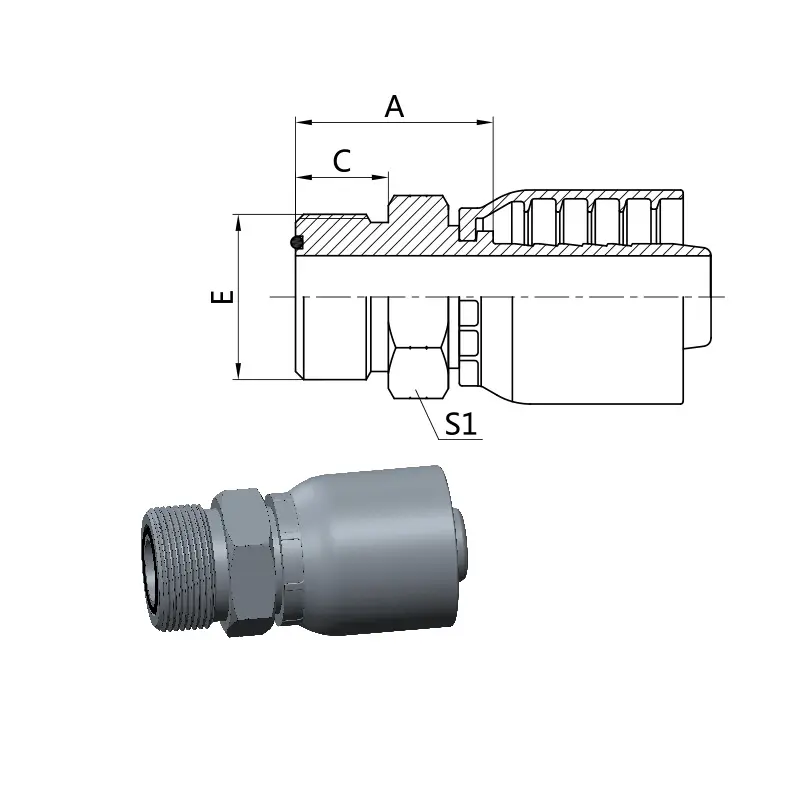
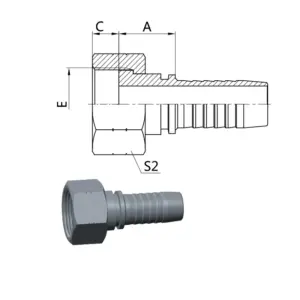
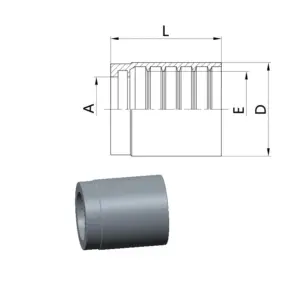
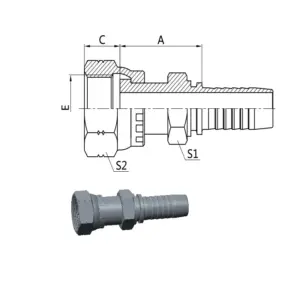
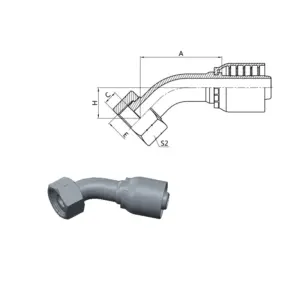
Reviews
There are no reviews yet.